Board Elections on December 17, 2019
CONTACT: Sunland Tujunga Chamber of Commerce
Members in good standing (dues paid) are allowed to vote.
WHEN: 2019-12-17 @ 6:30 pm – 8:30
CONTACT: Sunland Tujunga Chamber of Commerce
WHEN: 2019-12-17 @ 6:30 pm – 8:30
McGroarty Arts Center is committed to providing the best possible arts education to all of its students. Our dedicated, masterful staff, small class size and diverse range of classes create the perfect environment for creative learning. We believe in cultivating long-lasting partnerships with our students and community in order to strengthen the arts ecosystem in the Foothill communities.
Our classes provide a fun and safe place that allows for self-expression within a structured, age-appropriate curriculum. Children learn formal concepts of art, such as color, line and composition and are given the freedom to apply those concepts in their own way. As a result, children at our Center create artwork and performances that reflect their natural talent and their own creative voice.
In addition, our programs are designed to be more than just “fun-time.” The strength of an arts education lies in its ability to teach critical thinking, creative thinking, empathy and self-worth. It is through making artistic choices, evaluating those choices, and comparing the choices of others that children begin to develop these crucial skills and reach a very valuable conclusion: sometimes there is more than one right answer. We hope every child we reach discovers a new way of communicating with the world and a life-long appreciation for the arts.

Adult Classes
Adult students come to our programs with different needs and goals. Some are looking for rigorous instruction to hone their skills, increase their knowledge and define their artistic voice. Others are looking for a refuge from the demands of daily life – a chance to relax and reflect through the creative process. McGroarty Arts Center offers a wide range of classes for adults that meet the needs of our varied clientele. Our office staff can best advise you on which classes will meet your needs.

McGroarty Arts Center is committed to providing
McGroarty Arts Center was founded in 1953 in the historic home of John Steven McGroarty. Mr. McGroarty was born in Pennsylvania in 1862. Before moving to Tujunga in 1901, Mr. McGroarty had already worked as a school teacher, a journalist, served as a justice of the peace and Treasurer of Luzerne County, and had been admitted to the Bar and started his own legal practice. In 1901, John and his wife, Ida Lubrecht McGroarty, settled in Tujunga, California in hopes that the clean air would ease John’s asthma. That same year, Mr. McGroarty joined the staff of the Los Angeles Times. McGroarty wrote for the LA Times for more than 40 years, authoring the weekly comment column, “Seen from the Green Verdugo Hills,” which he continued to write during his two terms in the House of Representatives (1935-1939).

Mr. McGroarty wrote several poems and plays, most notably the Mission Play, which was a three-hour pageant portraying the history of the California missions. The play ran for twenty years and was seen by over two million people. In 1933, Mr. McGroarty was appointed Poet Laureate of California, a position which he held until he died in 1944, at the age of 82.
The McGroarty home was built in 1923-1924 on the same foundation of the McGroartys’ previous house that had burned down. The McGroartys had no children. After Mr. McGroarty’s death, his niece inherited the home and surrounding grounds – an estimated 12 acres of undisturbed native chaparral. McGroarty’s neice, with encouragement from several local community groups, sold the McGroarty property to the City of Los Angeles in 1953. The house was declared a City of Los Angeles historic-cultural monument (#63) in 1970.

The Department of Recreation and Parks managed McGroarty Arts Center from 1953 until 1974, when management was transferred to the Department of Cultural Affairs, City of Los Angeles. In 1995, McGroarty Arts Center was privatized, and since then it has been operated by a non-profit organization (known as McGroarty Arts Center), in partnership with the Department of Cultural Affairs, City of Los Angeles. In the years since its privatization, the Center has developed into a bustling community arts center, boasting programs that are enjoyed by more than 7500 people each year.
McGroarty Arts Center was founded in 1953

Wendell Dayton in the studio, age 79. Photo by Bryan David Hall. Courtesy of the artist.
In the Shadow Hills section of Sunland—a semi-rural Los Angeles municipality where yellow signs warn motorists to “share the road” with equestrians—there’s a dusty lot on the corner of Art Street. Here, one finds an outdoor sculpture garden that could more easily be confused for some perplexing (and perilous) roadside attraction than the plein air studio-showroom of L.A.’s next rising star: 80-year-old Wendell Dayton
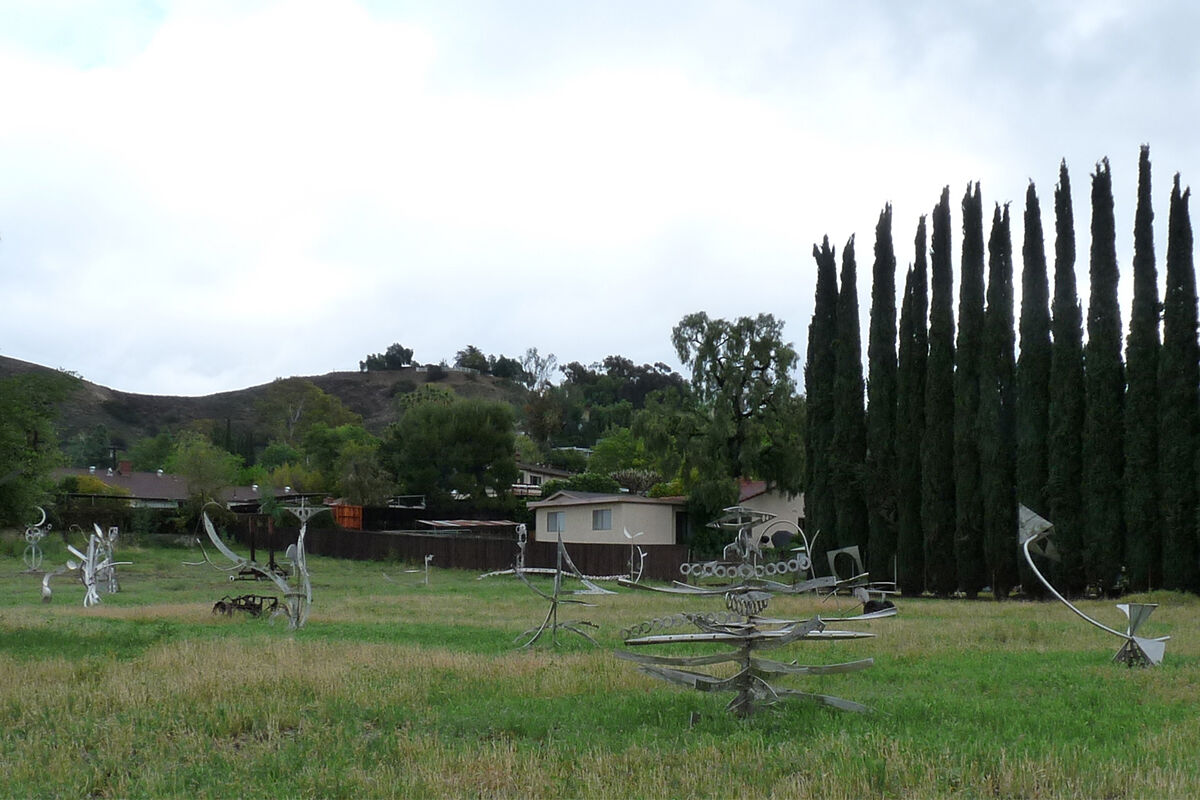
Wendell Dayton’s studio view. Courtesy of the artist.
“Petting zoo?” Dayton asks, confused, before directing the mother and child to a nearby horse farm. “At one time this was an orange grove,” he explains. “When I moved here, there were 12 orange trees left, but most of them got old and died.”
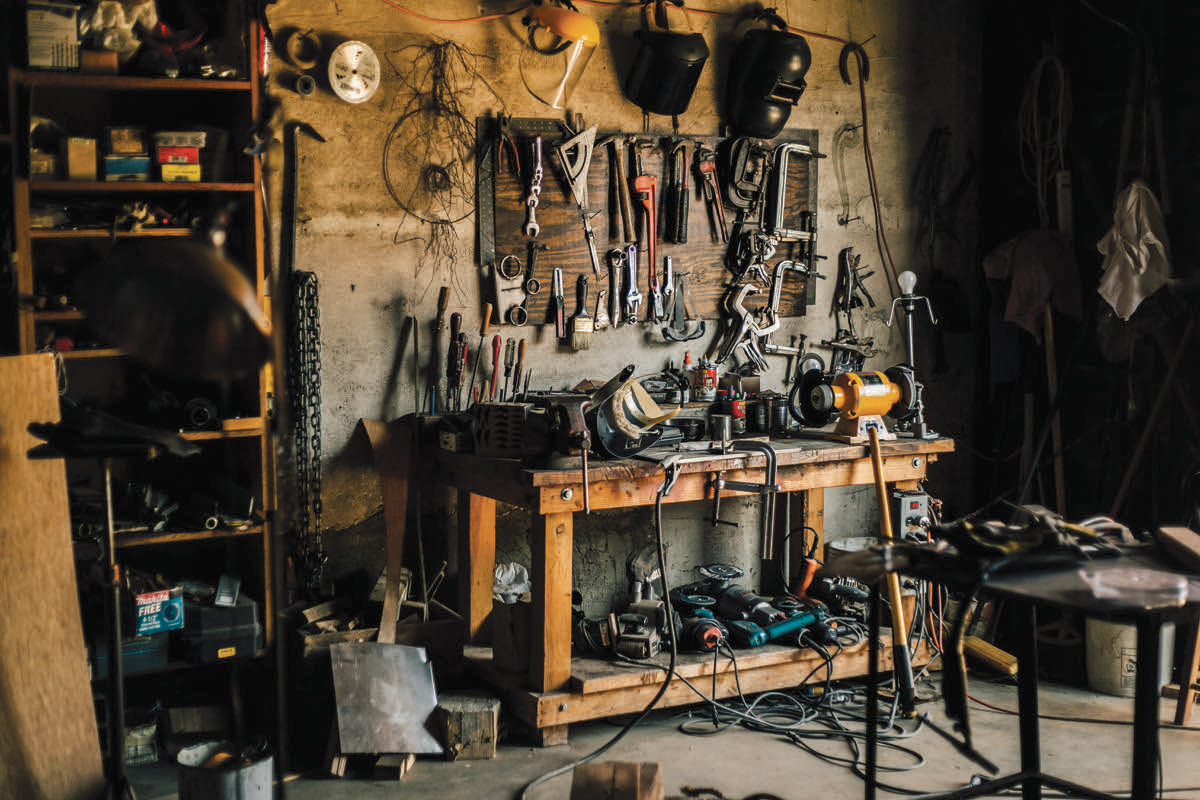
Wendell Dayton’s studio shop, 2016. Photo by Bryan David Hall. Courtesy of the artist.
Dayton, however, is still standing. Most days, you’ll find him in his on-site metal shop wielding a plasma cutter, chain horse, gantry, or pipe bender with some begrudging help from his new assistant, Brooks. The artist introduces me to some of his favorite mixed-media pets, often with the refrain: “That’s in the show.” There’s The Pair (2016), a wonky weather-vane affair with a stainless steel sugar skull, which is suspended 20 feet in the air; Jenny (2009), a reclining female form hewn from an industrial kitchen counter, who is receiving her lover’s upcycled erection; a funky mobile called Turnstile (2011), featuring arms of pierced steel curves and ripped pipes that mimic the bent oil vessels of Beauty (2004), whose line was borrowed from a woodcut by
Kitagawa Utamaro; and X (1971), a jagged convergence of intersecting planes that represents the final work Dayton made during his days in New York.

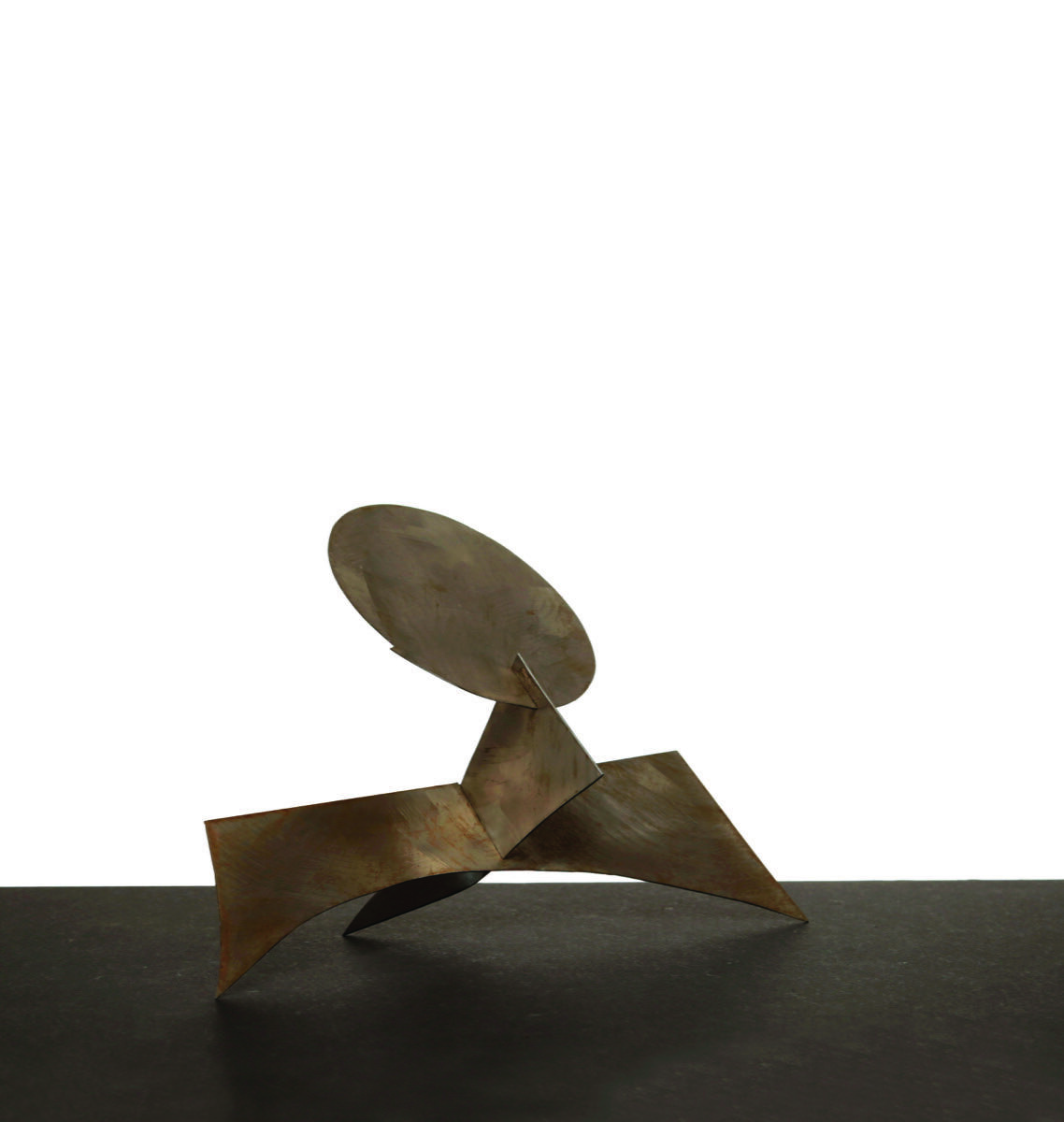
Wendell Dayton, Structure, 1975. Photo by Bryan David Hall. Courtesy of the artist.
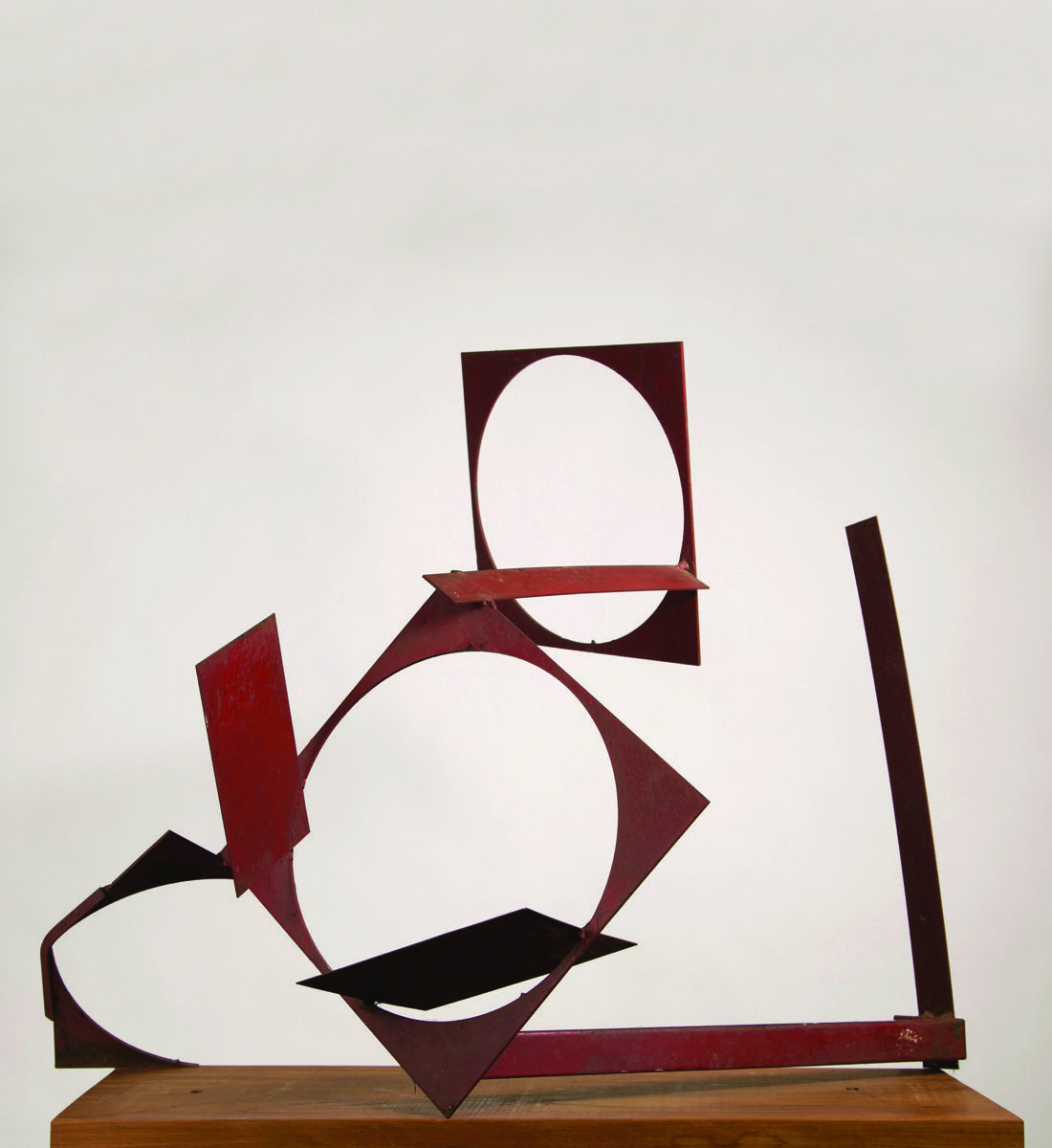
Wendell Dayton, Engine, 1966. Photo by Bryan David Hall. Courtesy of the artist.

He got the cash register—40 of them, to be exact, for a buck a piece—from his neighbor. After this first assemblage, Dayton “got in a groove” with some help from Uncle Sam. “I would arrange with my boss to collect unemployment 20 weeks a year so I could work and hang out at the Half Note and listen to Coltrane,” recalls Dayton. The resourceful sculptor also got by with “artist credits” at the lumberyard; siphoning electricity from his downstairs neighbor also helped keep bills down. “I was welding all I wanted to, I could do anything. I didn’t want to leave, but my wife wanted to, so I said, ‘Wait, I’ll go with you.’”

Wendell Dayton, Crescent, 1968. Photo by Bryan David Hall. Permanent collection, LACMA.
Dayton’s work is literally enveloping every crevice of the property. There’s a drained diving pool on the side of the 1939 ranch house that was only used for “a few swims” before assuming its current purpose: a storage area for scraps that may one day yield a sculpture. At the moment, it contains three 10-foot-tall wind chime-like mobiles. As we walk inside, Dayton leads me through a living room-turned-gallery that is filled with discreet, painted sculptures of spliced machinery on top of plinths. (Some have been dedicated to

Wendell Dayton. Photo by Bryan David Hall. Courtesy of the artist.
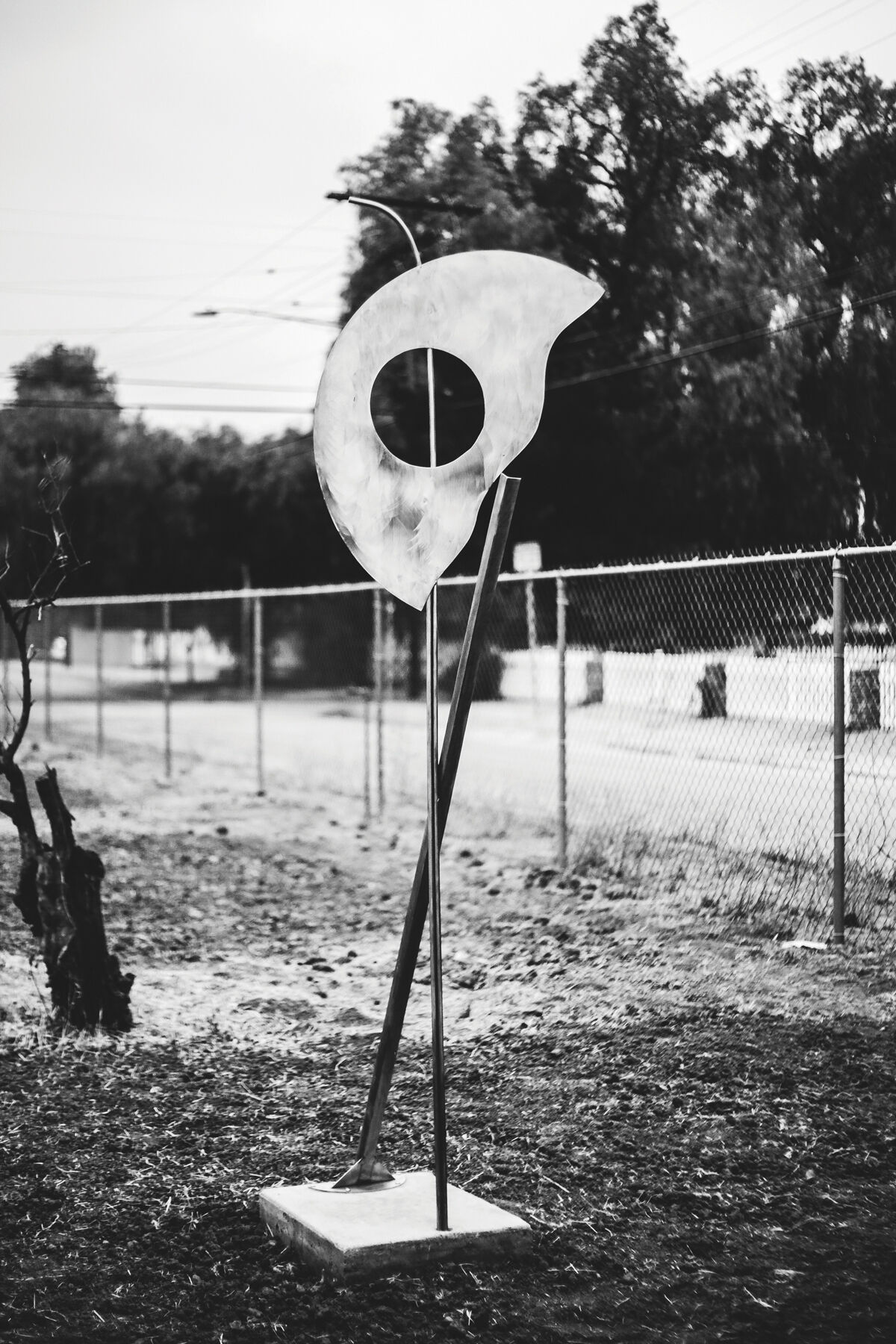
Wendell Dayton, Rising Moon, 1979. Photo by Bryan David Hall. Courtesy of the artist.
After a round of pastries, Dayton goes into an adjoining room and grabs his first-ever sculpture: a small, carved wooden figure—“possibly oak or walnut”—that he made in college, which resembles a pregnant mother, likely a riff on the Madonna and Child.
Though it’s one of the few works that won’t be included in the Blum & Poe show, it does speak to the takeaway Blum hopes visitors will have after getting a deep dive into Dayton’s oeuvre this summer: “That the spirit of an artist is conveyed simply through a daily practice of making work, irrespective of having a professional career.
Courtesy: Here
Wendell Dayton in the studio, age 79.
Hookah, also known as Shisha, involves adults smoking flavored tobacco from a water pipe in which they pass a hose and take a puff among family or friends. It centers around conversations and promotes a more connectedness among those participating. Hookah is deeply rooted in a cultural tradition that has been present throughout generations among Indian, Persian, Turkish, Egyptian and other Middle Eastern families. Its gesture is more than an entertaining social activity or means to relax, it’s a way that families, relatives, friends and business associates in these cultures provide hospitality and strengthen bonds with one another.
The first hookah in the form we know today dates back to 16th century India at a time when Indian glass manufacturing began as a result of the exporting of glass in India through the British East India Company. During this period, smoking tobacco also became popular amongst the noblemen in high society. In an attempt to purify smoke through water in a glass base called a “Shisha”, the Hookah was invented. Hookah soon cemented itself as a way for noblemen to show their high social status.
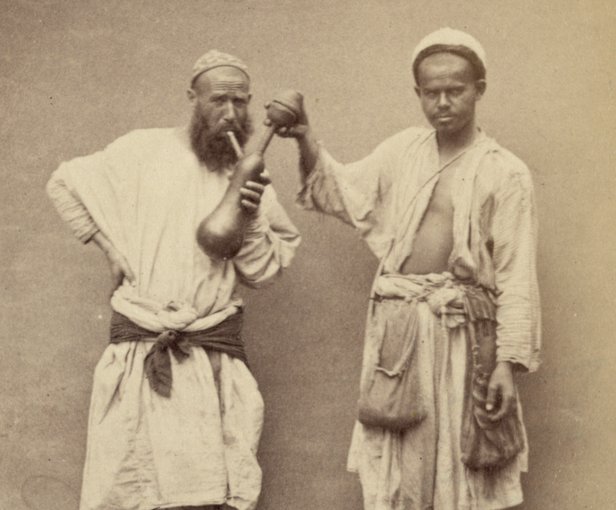
In the 17th century, Hookah became a part of Persian culture where a strong, dark leaf tobacco called Ajami was used. Craftsmen took pride in the aesthetics and redefined the look of the pipe through woodworking. For the first time, Hookah became accessible to everyone and an industry of hookah servants emerged. Even the Shah at the time had his own servants for hookah.
Hookah migrated into Turkish culture and during the 18th century, it continued to blossom through means of more innovation. The dated look of the Hookah was phased out as blacksmiths began casting intricate brass designs and adorned the pipe with royal and religious markings. Hookah was prominent in Turkish high society and was a true symbol of status. It was smoked after royal dinners and at diplomatic meetings. Offering a hookah to a guest became an important sign of trust and withholding it could be taken as a serious insult.
The Hookah tradition spread into the Middle East throughout the 19th century. In Egypt, traditional forms of tobacco seen prior were reformulated into Mu’Assel by mixing honey or molasses with the tobacco. Mu’Assel translates directly as “with honey” but this term generally refers to a flavored tobacco as even dried lemon, grape, watermelon, and mint were added. Hookah integrated into society so deeply in these parts that hookah cafes were built to house the ever-growing popularity. Hookah promoted a community amongst the patrons, uniting all classes, races, and genders alike. It was used as a way for people to relax, socialize and strengthen bonds with one another.
Throughout the 20th Century, hookah traditions continued to deepen in cultures throughout India, Persia, Turkey, the Middle East, and in neighboring countries such as Israel, Armenia, and Pakistan. However, by the late 1900s, hookah has migrated to virtually every continent as immigrants of these countries brought this custom with them to share a piece of their culture to the new world.
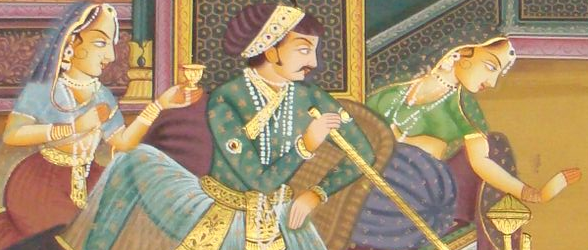
In the early 21st Century, a Hookah industry surfaced in the United States as early pioneers found ways to improve the quality of products using modern technology. Innovations in flavors choices beyond the traditional were also crafted to address the demands of current-day taste preference and variety.
Today, in the United States and around the world, hookah has hardly broke from tradition as it is still revered as a way to show respect and provide good hospitality as it was 100s of years ago. Family members, close friends and new acquaintances come together and deepen ties over a hookah in the same way it has been done for generations. Hookah is a part of an extensive community that brings people together despite social class, religion, or political beliefs. While there have been advancements in hookah over the years, the practice remains deeply rooted in tradition. And for many people spanning numerous nationalities, hookah is…a cultural expression.
Hookah, also known as Shisha, involves adults
What kind of Cannabis is right for me?
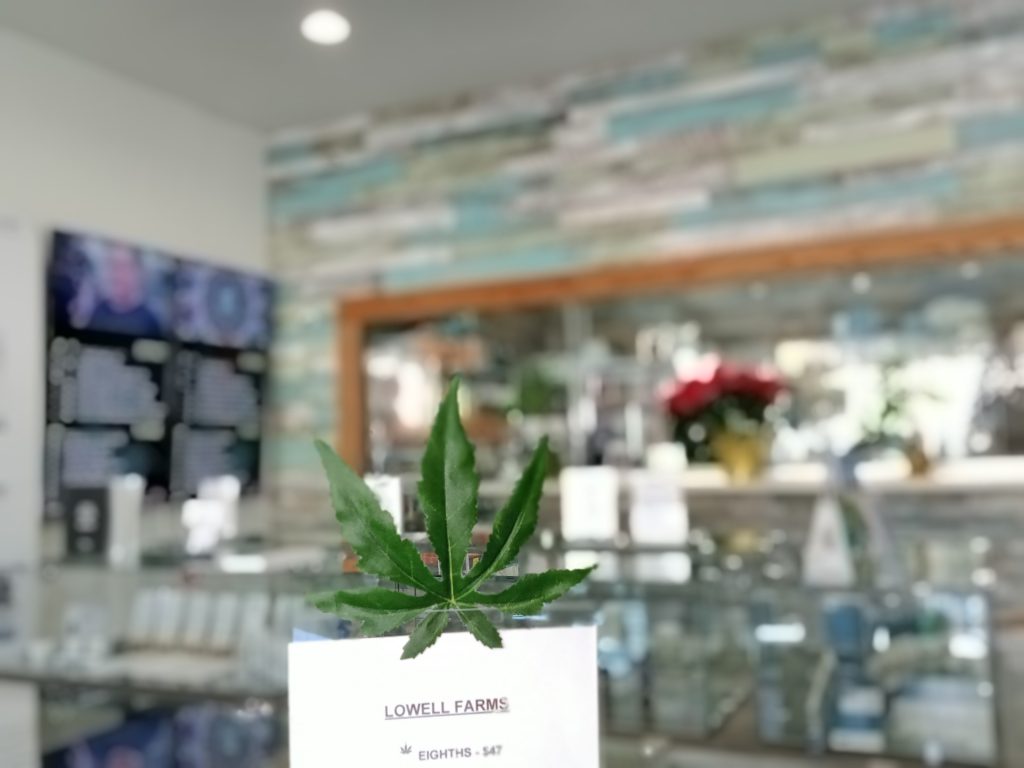
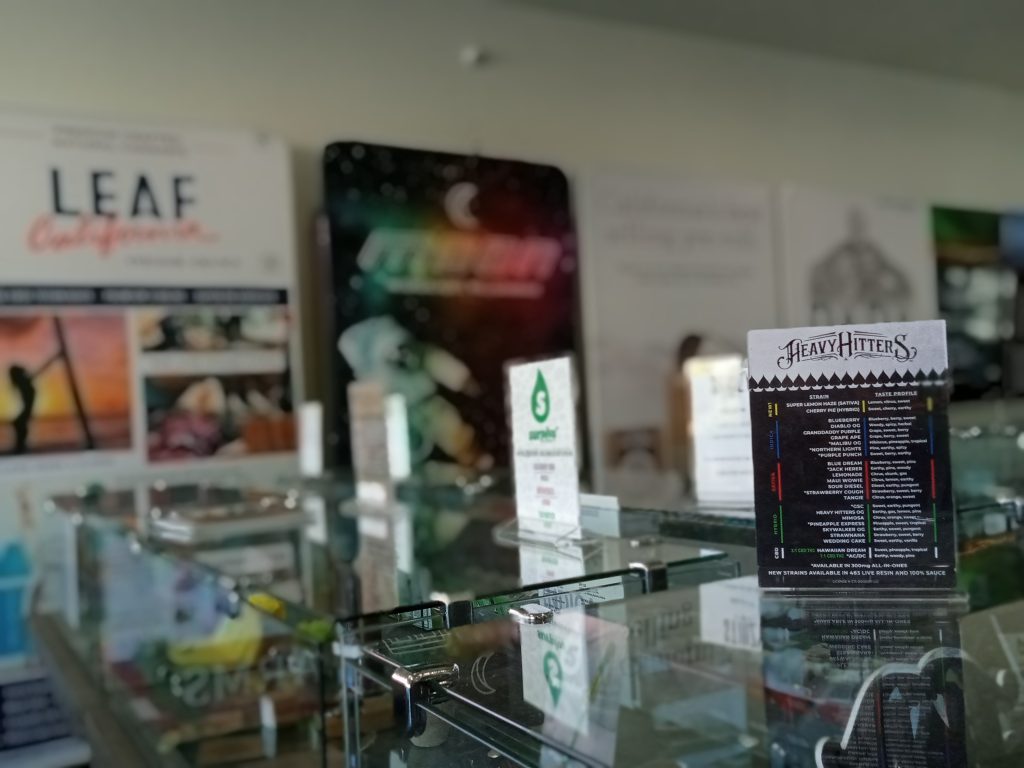
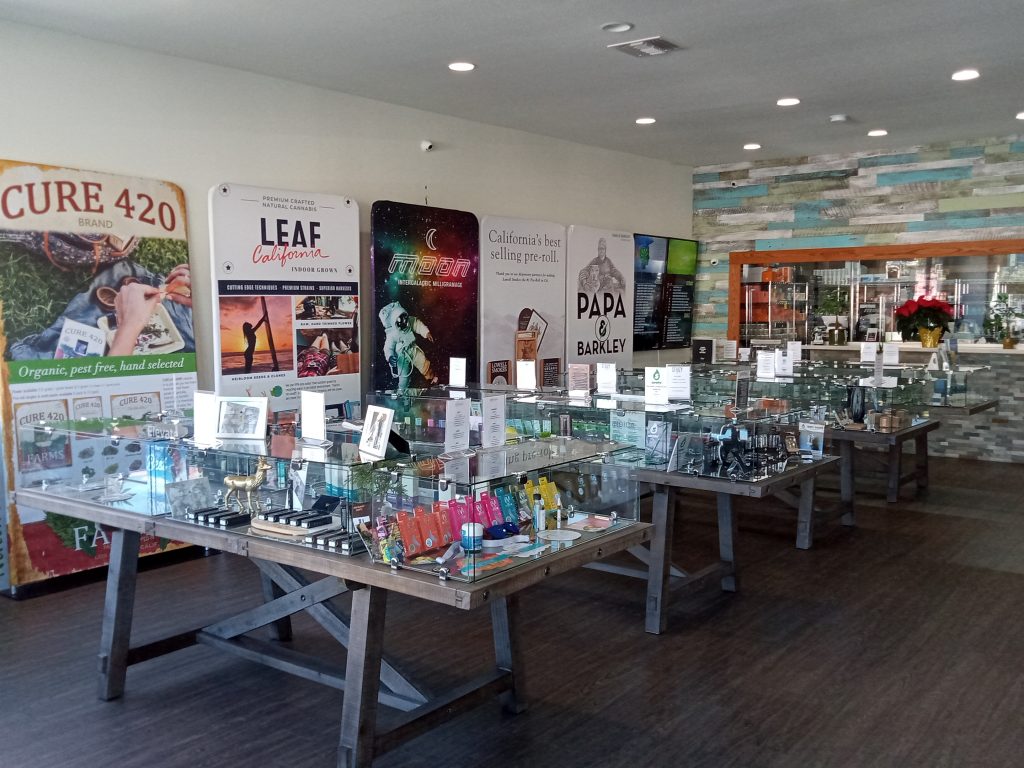
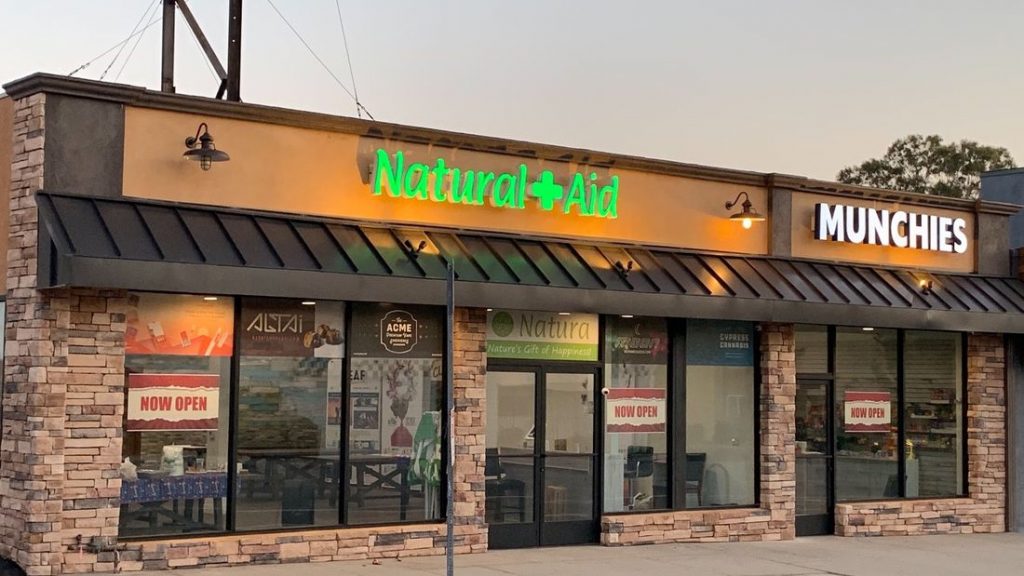

Visit our website for more articles and answers to the questions people have asked.
Do I smoke cannabis if I have a heart condition?
Can I eat cannabis if I don’t like to smoke?
What’s the best cannabis consumption for kids with health issues that may benefit from cannabis?
What’s the right strain for me?
What is the right dosage?
Is vaping cannabis safe?
Can I overdose on Cannabis?
Is cannabis helpful with Cancer?
Can I get samples?
What benefit’s does CBD have?
What do I do if I have consumed too much cannabis?
What kind of Cannabis is right for me? Natural Aid Cannabis Boutique leads with
Seafood, Fast Food, Mexican
Pena’s Tacos is the best place to spend your leisure time tasting delicious food and enjoying the nice atmosphere. After visiting our restaurant you will definitely have a wish to come back!
Call Now: (818) 433-8634
Seafood, Fast Food, Mexican Pena’s Tacos is the
Family owned and operated, Byblos Mediterranean Bakery aims to be La Crescenta’s top restaurant. Ambitious and full of passion, Avo crafts each dish with exquisite taste that brings the Middle East to Central Los Angeles. Stop by, say hello, and enjoy a meal that will surely please your palette.
Don’t be put off by the plain appearance of this place. Though superficially resembling a Middle-Eastern fast food restaurant, Byblos is head-and-shoulders over other such places in food quality and preparation. In particular, Byblos is set apart by the fact that they are a bakery, so they bake their offerings in-house and thus arrive extremely fresh to your table. Billed as a Lebanese restaurant, it is in fact Armenian owned.
With a small number of tables, the atmosphere is unremarkable. Again, don’t be bothered. With Armenian music playing in the background, you place your order at the counter; there’s no order-taking at the tables. Efficient order-takers (which often includes the manager) will take your choices and charge you. You pick up your number placard and choose a table to sit, where the delicious fare will soon arrive.
Arriving early on a Saturday night, we took advantage of being in a small group to fully sample their menu. For appetizers, we chose one of Byblos’ offerings that immediately sets it apart from their peers: Their abundant selection of Beuregs (Armenian flat breads with fillings.) We chose Spicy Cheese, Zaatar with Cheese (thyme, olive oil, sesame seed and cheese), Green Olive, and Spinach & Cheese. All arrived deliciously crisp and tasty.

Next came the soup, the traditional Vartabed or “Priest” Soup (lentil soup) to which you must always add lemon and cumin:

Then we moved on to the more traditional Vegetarian Plate (falafel, hummus, mutabal (eggplant spread,) tabouli, sarma (stuffed and rolled grape leaf) and pita bread.)

Though often offered, Byblos again excelled in this dish. Everything was very fresh; especially the tabouli, served over a single leaf of romaine lettuce. The pita bread was very different from the usual: Freshly baked, it arrived still plump from the oven heat.
With it we ordered lahmajun (Armenian pizza with a thin layer of ground meat and vegetables:)
We continued our tasting with another of Byblos’ unusual offerings: Fried Cauliflower. Often baked, the cauliflower here had just the right amount of crispness, not too crunchy nor too soft. The fried cauliflower was served with two sauces: a tahini sauce and a garlic lemon parsley dressing that was excellent.

We rounded up our choices with kibbeh (An egg-shaped bulghur-meat shell filled with ground beef)

and Filet Mignon Kebab (chunks of marinated filet mignon grilled on skewers) served with roasted pepper and tomato and sides of mutabal and hummus:)

Both of these – together with the lahmajun- received the approval of our meat-eating members.
We all agreed that Byblos is comfortably placed at the top of Middle-Eastern restaurants. Though not on the cheap side, Byblos is nevertheless reasonably priced, particularly considering the quality. All the above samplings including a drink came to just $55. Highly recommended!
Byblos Mediterranean Bakery, 2948 Foothill Blvd, La Crescenta, CA 98214. Parking available both on their lot and on the street.
Family owned and operated, Byblos Mediterranean Bakery
Its an honor for the team at Sunlandtujunga.com to release the first full colored magazine dedicated solely to the people in and around Sunland Tujunga. The magazine, which will be released on the month of January will feature all the important news and businesses in around Sunland. The first phase of the magazine will be distributed in and around Sunland. Please feel free to contact us if you want to advertise in the magazine. Once you advertise in our magazine, you will automatically get featured in our website too.
Its an honor for the team at
We include them in our family portraits, make room for them on our beds, tell them our deepest secrets and miss work when they’re sick. And whether they paw, fly or swim their way into our hearts, pets are an important part of our lives.
America is a nation of animal lovers. According to the National Pet Owners Survey, about two-thirds of U.S. households own at least one pet, which means 71 million homes provide shelter for at least one furry, feathery or scaly critter. We take good care of our pets, but did you know that our pets also take good care of us? A growing body of research suggests that owning and interacting with a pet can improve our health.
Besides loving you unconditionally, studies show that those wagging, purring or hopping bundles of love can reduce your stress levels, tame your blood pressure, curb your depression, reduce feelings of loneliness, keep you physically fit and even help you live longer.
Some studies suggest that children who are exposed to furry pets as infants are less likely to develop allergies.
“There are lots of studies showing that pets are good for our health,” says Rebecca Johnson, PhD, RN, director of the Research Center for Human-Animal Interaction at the University of Missouri College of Veterinary Medicine.
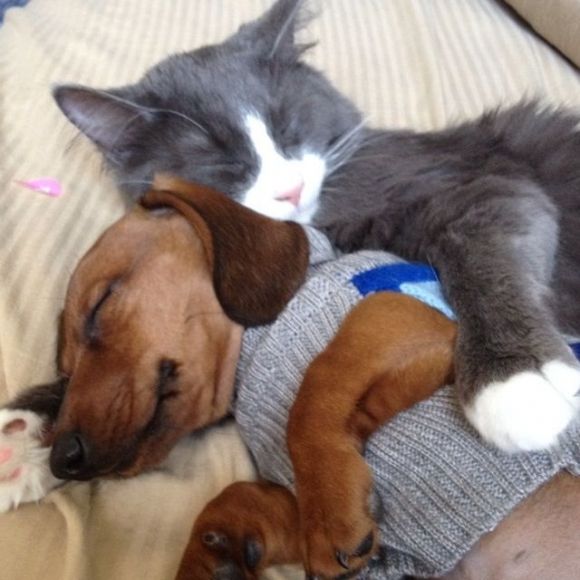
Researchers are busy studying the many ways our pets can benefit our health. Several large studies suggest that Fluffy and Fido — in addition to winning your heart — can improve the way your heart works. A National Institutes of Health study of 420 adults who had suffered heart attacks showed that pooch owners were significantly more likely to still be kicking — and their tickers still ticking — one year later than were poochless patients, regardless of how serious the heart attack. In another study of 240 married couples, those who owned pets had lower heart rates and blood pressure, both at rest as well as under stress.
Your best bud can also improve your circulation. A study involving cat owners found they have fewer strokes than their feline-free counterparts.
“The reduction in blood pressure through interaction with a companion animal has been shown in many studies,” Johnson says. “It’s practically the oldest finding we have.”
The “relaxation response” has even been shown when people kick back and watch their fish swim, Johnson says.
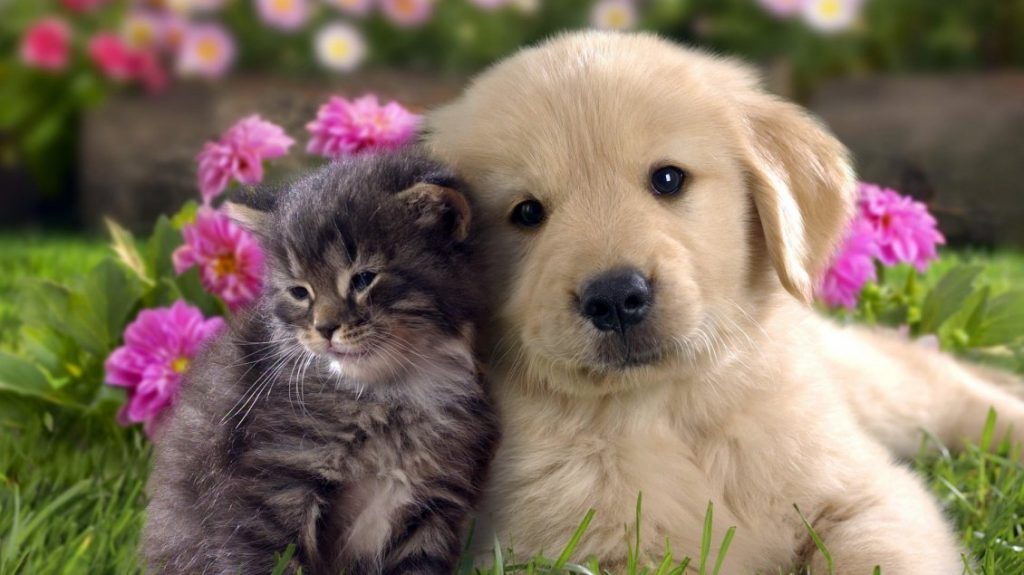
At the end of a long day, who doesn’t enjoy coming home to a cold nose, a wagging tail and a slobbery kiss? But is it okay to kiss our pets?
It’s not a good idea to let your pets lick you on the mouth, says Jennifer Wright, DVM, MPH, a veterinary epidemiologist at the U.S. Centers for Disease Control and Prevention. If you want to kiss your dog or cat, the top of her or his head is the preferred place to plant kisses.
“The rewards you get from your pets are much greater than the risk of acquiring an illness from a well-cared for pet,” Wright says.
Just like people, our pets can carry certain bacteria, viruses, parasites and fungi, so get into the habit of washing your hands after interacting with your pets. This is especially important for children and for people with compromised immune systems.
If you have a child younger than five, don’t bring turtles, amphibians such as frogs, or baby chicks into your home. Small kids can’t resist picking up these cute critters, but there’s a downside: They shed salmonella bacteria, which can cause serious illness, especially in small children, elderly people and folks with chronic conditions.
Pet-to-person infections can occur if you are bitten or scratched by an infected animal, or have contact with an infected pet’s waste or saliva. Cats and dogs can carry bacterial infections in their intestinal tracts, and parasites can be present in their waste. If you have small children, make sure the cat’s litter box is not accessible to them. Kids will put anything in their mouths, so you don’t want them in your cat’s toilet.
Keeping up with your pet’s vaccinations will help keep your pet healthy and reduce the risk of someone in your family contracting an animal borne infection.
“There are benefits to having pets, you just have to be aware that there are some risks and they are all perfectly preventable risks,” Wright says.
In terms of getting you off the couch and out the door, dogs have the edge.
“You’re not going to walk a snake,” Johnson says. “Dogs will facilitate physical exercise better than cats or other nonwalking pets.”
Studies show that dog owners who regularly walk their hounds lose pounds and are more physically active overall than those who don’t own or walk a dog. In addition to getting you outdoors — rain or shine — your pooch provides “social lubrication,” she says.
In other words, when you’re out walking Max, people are more likely to strike up conversations with you. And some research shows that neighborhoods where people walk dogs regularly are viewed as friendlier and safer.
We include them in our family portraits,